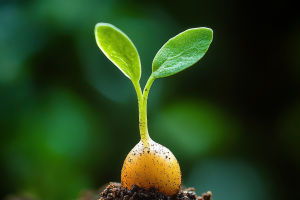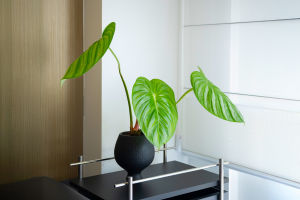Hello Lykkers! When you imagine a garden, what stands between towering trees and low-growing flowers? That's right—shrubs.
These multi-stemmed wonders are often overlooked, but they're true garden workhorses. Compact and full of personality, shrubs provide structure, color, and shelter without overshadowing everything else.
In this guide, we're diving into the world of shrubs—what defines them, how they function, and why they deserve a prime spot in your planting plans. Whether you're looking to fill a small space, create privacy, or just bring balance to your greenery, shrubs offer solutions that are both charming and practical.
Understanding Shrubs and Their Role
Let's start with what makes a shrub and how they contribute to the plant world and your landscape.
Compact
You might be wondering, what's the difference between a shrub and a tree? It mostly comes down to size and form. Shrubs are plants, just like trees, but they're generally shorter—often under 5 meters tall. What makes them unique is their structure. Instead of having one main trunk like a tree, shrubs usually branch out from the base, forming multiple stems.
Next time you're strolling through a garden, try spotting them. You'll see that shrubs can range from the tidy boxwood to the wild and flowering hydrangea. Their ability to stay relatively small while still being sturdy makes them ideal for framing pathways, bordering fences, or acting as natural screens.
Seasonal Interest and Habitat Value
Another reason to love shrubs? They bring seasonal variety. You can choose types that bloom in spring, offer berries in fall, or stay evergreen all year. This means you get texture and color even when other plants are resting. You're also giving a home to birds and insects, who rely on shrubs for shelter, nesting, and food.
From lavender buzzing with pollinators to berry-laden viburnums feeding feathered friends, these plants are low-key ecological champions. And the best part? Once they're established, they're generally easy to care for.
Choosing and Growing Shrubs in Your Space
Now that you're more familiar with what shrubs do, let's look at how you can bring them into your own garden or green space.
Picking the Right Shrubs
First things first—think about what you want from your shrub. Are you after flowers, privacy, fragrance, or a pop of color during the cooler months? You'll find a shrub for almost every goal. If your space is small, go for compact varieties like dwarf azaleas. For a bold border, you could use taller species like lilacs or camellias.
Don't forget to consider sun and soil needs. Some shrubs love full sun and sandy soil, while others thrive in shady corners with rich, moist ground. You'll want to match your plant to your environment, not the other way around. That way, your shrub can grow strong with minimal fuss.
Caring for Your Shrubs
Once your shrub is in the ground, it's all about helping it settle in. You'll want to water regularly during the first year, especially in dry spells. Adding mulch around the base keeps moisture in and weeds out. And don't be afraid to give it a little trim—pruning helps shape the plant and encourages healthy growth.
You'll notice that some shrubs bloom on new wood (this season's growth), while others bloom on old wood (last year's stems). Knowing which is which helps you prune at the right time. For example, trim hydrangeas after they flower if they bloom on old wood, or in late winter if they bloom on new.
Shrubs may be smaller than trees, but their impact is big. Lykkers, these versatile plants offer structure, beauty, and life to your outdoor space, all while staying compact and easy to manage. Whether you're new to gardening or a seasoned plant lover, there's always room for a few thoughtfully chosen shrubs.
Next time you're planning your garden, think of them as your dependable middle ground—bridging the gap between bold trees and delicate flowers with grace, color, and function. Shrubs are nature's subtle storytellers, quietly supporting the landscape while adding their own flair.


